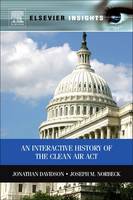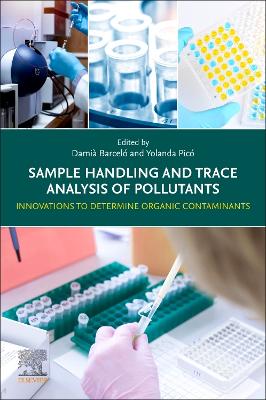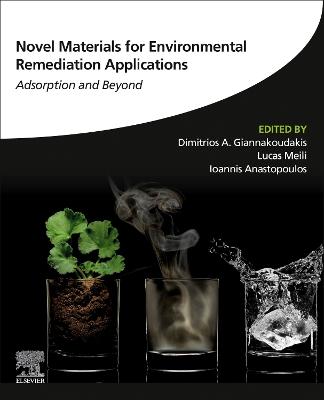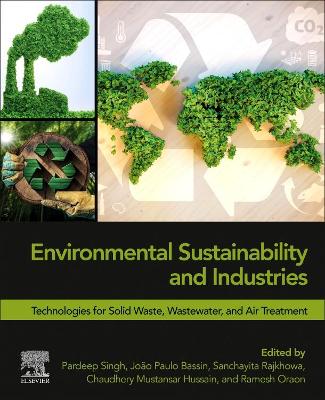Interactive History of the Clean Air Act
 -10%
portes grátis
-10%
portes grátis
Interactive History of the Clean Air Act
Scientific and Policy Perspectives
Norbeck, Joseph M; Davidson, Jonathan M
Elsevier - Health Sciences Division
12/2011
162
Mole
Inglês
9780323165419
15 a 20 dias
300
Descrição não disponível.
1: Introduction and Overview
2: An Expanding Federal Presence in Air Quality Controls
3: Federal Leadership in Clean Air Act Implementation: The Role of the Environmental Protection Agency
4: State Implementation Planning for Clean Air
5: Industry Responses to the Clean Air Act
6. Industry and Multi-State Association Roles
7: Lessons Learned
2: An Expanding Federal Presence in Air Quality Controls
3: Federal Leadership in Clean Air Act Implementation: The Role of the Environmental Protection Agency
4: State Implementation Planning for Clean Air
5: Industry Responses to the Clean Air Act
6. Industry and Multi-State Association Roles
7: Lessons Learned
Este título pertence ao(s) assunto(s) indicados(s). Para ver outros títulos clique no assunto desejado.
3M; Advisory Council on Executive Organization; Aerospace Industry Association; Air Pollution Control Act of 1955; Air Pollution Control Association; Air Pollution Control Office; Air Quality Act of 1967; Air Quality Management Work Group; Alliance of Automobile Manufacturers; American Chemistry Association; American Petroleum Institute; American Waste Management Association; Andrew J. Mellon Foundation; Ann Gorsuch; Arizona Department of Environmental Quality; attainment area; Automotive Composites Consortium; Automotive Industry Action Group; best available control technology; bubble area; California Air Resources Board; cap and trade; Carbon Disclosure Project; Carbon monoxide; Central States Air Resources Agencies; Chemical Manufacturers Association; Christie Todd Whitman; Clean Air Act Advisory Committee; Clean Air Act Amendments of 1970; Clean Air Act Amendments of 1977; Clean Air Act Amendments of 1990; Clean Air Act of 1963; collaborative processes; Compliance Assistance Advisory Committee; Cooperative Research Act of 1984; criteria pollutants; Department of Health, Education, and Welfare; Donora, Pennsylvania; Douglas M. Costle; Dow Chemical Company; DuPont; Edison Electric Institute; Edmund S. Muskie; emission controls; Environmental Protection Agency; Environmental Research Institute; EPA budget; EPA regional offices; epidemiological studies; Exxon Mobil; Florida Department of Environmental Regulation; Ford Motor Company; FreedomCAR and Fuel Partnership; General Accounting Office; Global climate change; Governmental Accountability Office; greenhouse gases; Hawaii Department of Health; Howard Baker; industry; lead; Lee M. Thomas; Lisa P. Jackson; litigation; London fog; Los Angeles; lowest achievable emission rate; Maryland Department of the Environment; Massachusetts v. EPA; Michigan Department of Environmental Quality; Mid-Atlantic Regional Air Management Association; mobile source; Motor Vehicle Air Pollution Act of 1965; multi-state associations; National Academy of Sciences; National Advisory Council on Environmental Policy and Technology; National Ambient Air Quality Standards; National Emission Standards for Hazardous Air Pollutants; National Environmental Performance Partnership System; National Petrochemical and Refiners Association; National Research Council; National Tribal Environmental Council; negotiated rulemaking; nitrogen oxides; nonattainment area; Northeast Center for a Clean Air Future; Northeast Diesel Collaborative; Northeast States for Coordinated Air Use Management; Office of Air and Radiation; Office of Environmental Policy Innovation; Office of Regional Operations; Oklahoma Department of Environmental Quality; ozone; particulate matter; performance standards; pre-competitive; prevention of significant deterioration; Procter & Gamble; public health; public welfare; Reasonably Available Control Technology; regional consortium; Responsible Care Program; Richard M. Nixon; Rohm and Haas; Ronald Reagan; Russell Train; Sierra Club; Southeastern States Air Resource Managers; stakeholder; state environmental agencies; State Environmental Protection Administration of China; state implementation plan; stationary source; Stockholm Convention on Persistent Organic Pollutants; sulfur dioxide; sustainability; technology forcing; Texas Commission on Environmental Quality; Texas Instruments; The Boeing Company; Title V; toxic air pollutants; trade association; Train v. Natural Resources Defense Council; Union Electric v. EPA; United States Climate Action Partnership; United States Council for Automotive Research; University of California, Riverside; Western Regional Air Partnership; Western States Air Resources Council; William K. Reilly; William Ruckelshaus; World Bank
1: Introduction and Overview
2: An Expanding Federal Presence in Air Quality Controls
3: Federal Leadership in Clean Air Act Implementation: The Role of the Environmental Protection Agency
4: State Implementation Planning for Clean Air
5: Industry Responses to the Clean Air Act
6. Industry and Multi-State Association Roles
7: Lessons Learned
2: An Expanding Federal Presence in Air Quality Controls
3: Federal Leadership in Clean Air Act Implementation: The Role of the Environmental Protection Agency
4: State Implementation Planning for Clean Air
5: Industry Responses to the Clean Air Act
6. Industry and Multi-State Association Roles
7: Lessons Learned
Este título pertence ao(s) assunto(s) indicados(s). Para ver outros títulos clique no assunto desejado.
3M; Advisory Council on Executive Organization; Aerospace Industry Association; Air Pollution Control Act of 1955; Air Pollution Control Association; Air Pollution Control Office; Air Quality Act of 1967; Air Quality Management Work Group; Alliance of Automobile Manufacturers; American Chemistry Association; American Petroleum Institute; American Waste Management Association; Andrew J. Mellon Foundation; Ann Gorsuch; Arizona Department of Environmental Quality; attainment area; Automotive Composites Consortium; Automotive Industry Action Group; best available control technology; bubble area; California Air Resources Board; cap and trade; Carbon Disclosure Project; Carbon monoxide; Central States Air Resources Agencies; Chemical Manufacturers Association; Christie Todd Whitman; Clean Air Act Advisory Committee; Clean Air Act Amendments of 1970; Clean Air Act Amendments of 1977; Clean Air Act Amendments of 1990; Clean Air Act of 1963; collaborative processes; Compliance Assistance Advisory Committee; Cooperative Research Act of 1984; criteria pollutants; Department of Health, Education, and Welfare; Donora, Pennsylvania; Douglas M. Costle; Dow Chemical Company; DuPont; Edison Electric Institute; Edmund S. Muskie; emission controls; Environmental Protection Agency; Environmental Research Institute; EPA budget; EPA regional offices; epidemiological studies; Exxon Mobil; Florida Department of Environmental Regulation; Ford Motor Company; FreedomCAR and Fuel Partnership; General Accounting Office; Global climate change; Governmental Accountability Office; greenhouse gases; Hawaii Department of Health; Howard Baker; industry; lead; Lee M. Thomas; Lisa P. Jackson; litigation; London fog; Los Angeles; lowest achievable emission rate; Maryland Department of the Environment; Massachusetts v. EPA; Michigan Department of Environmental Quality; Mid-Atlantic Regional Air Management Association; mobile source; Motor Vehicle Air Pollution Act of 1965; multi-state associations; National Academy of Sciences; National Advisory Council on Environmental Policy and Technology; National Ambient Air Quality Standards; National Emission Standards for Hazardous Air Pollutants; National Environmental Performance Partnership System; National Petrochemical and Refiners Association; National Research Council; National Tribal Environmental Council; negotiated rulemaking; nitrogen oxides; nonattainment area; Northeast Center for a Clean Air Future; Northeast Diesel Collaborative; Northeast States for Coordinated Air Use Management; Office of Air and Radiation; Office of Environmental Policy Innovation; Office of Regional Operations; Oklahoma Department of Environmental Quality; ozone; particulate matter; performance standards; pre-competitive; prevention of significant deterioration; Procter & Gamble; public health; public welfare; Reasonably Available Control Technology; regional consortium; Responsible Care Program; Richard M. Nixon; Rohm and Haas; Ronald Reagan; Russell Train; Sierra Club; Southeastern States Air Resource Managers; stakeholder; state environmental agencies; State Environmental Protection Administration of China; state implementation plan; stationary source; Stockholm Convention on Persistent Organic Pollutants; sulfur dioxide; sustainability; technology forcing; Texas Commission on Environmental Quality; Texas Instruments; The Boeing Company; Title V; toxic air pollutants; trade association; Train v. Natural Resources Defense Council; Union Electric v. EPA; United States Climate Action Partnership; United States Council for Automotive Research; University of California, Riverside; Western Regional Air Partnership; Western States Air Resources Council; William K. Reilly; William Ruckelshaus; World Bank







